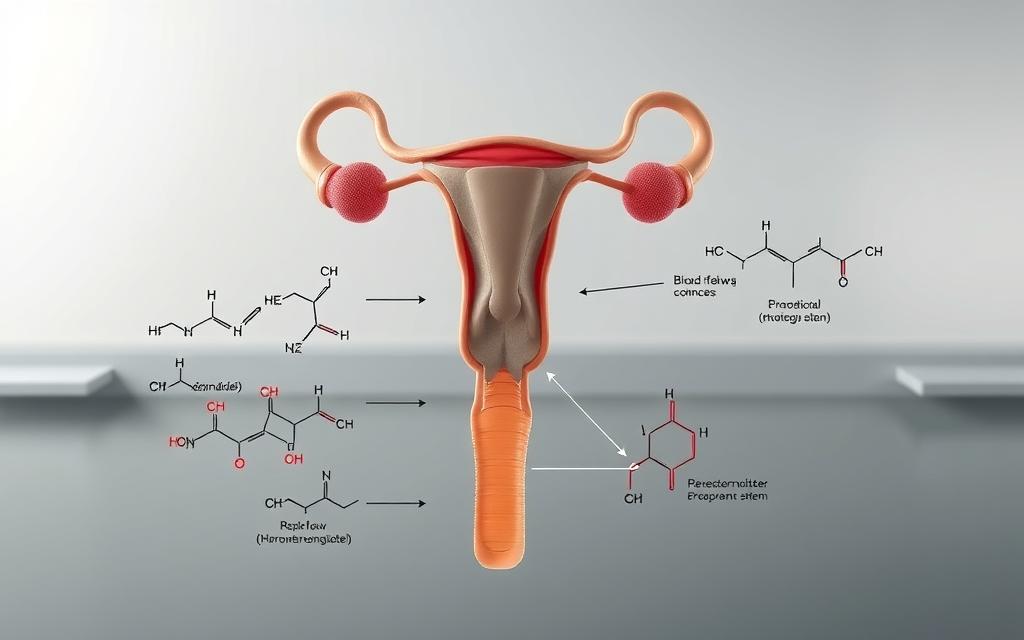Understanding FES for Disabled Erectile Dysfunction: Treatment & Benefits
Functional Electrical Stimulation (FES) is emerging as a promising treatment for erectile dysfunction in individuals with disabilities. This innovative therapy involves the use of electrical currents to stimulate the nerves and muscles responsible for erectile function.
FES has shown potential in helping individuals regain sexual function, thereby improving their overall quality of life. By exploring the benefits and applications of FES, we can better understand its role in addressing erectile dysfunction in disabled individuals. This article aims to provide an in-depth look at FES treatment, its advantages, and what it means for those affected by erectile dysfunction.
What is FES and How Does It Work for Erectile Dysfunction?
Functional Electrical Stimulation (FES) is emerging as a promising treatment for erectile dysfunction (ED) in individuals with disabilities. This therapy involves the use of electrical currents to stimulate muscle contractions and improve bodily functions. In the context of ED, FES aims to enhance erectile function by targeting the relevant neurological pathways and muscles.
FES is not a new concept; it has been used in various medical fields, including physical rehabilitation and pain management. Its application in treating ED is relatively recent and is based on the principle that electrical stimulation can help restore or improve erectile function.
The Science Behind Functional Electrical Stimulation
The science behind FES lies in its ability to stimulate the nerves and muscles involved in erection. By applying electrical impulses, FES can enhance blood flow and promote the neural signals necessary for achieving and maintaining an erection. This method is particularly beneficial for individuals with neurological conditions or injuries that affect erectile function.
Neurological Pathways Targeted in ED Treatment
FES targets the neurological pathways responsible for erectile function. The therapy stimulates the sacral nerve roots, which play a crucial role in controlling the pelvic organs, including those involved in erection. By enhancing the neural signals to these areas, FES can potentially improve erectile function in men with ED.
FES Equipment and Application Methods
The equipment used for FES therapy includes devices that generate electrical impulses and electrodes that are placed on the skin or implanted to deliver the stimulation. The application method varies depending on the individual’s condition and the specific goals of the treatment. A healthcare professional determines the appropriate settings and placement of electrodes to ensure effective and safe treatment.
| FES Equipment Type | Application Method | Benefits |
|---|---|---|
| Surface Electrodes | Placed on the skin | Non-invasive, easy to use |
| Implantable Electrodes | Surgically implanted | More precise stimulation, long-term use |
Erectile Dysfunction in Disabled Individuals: Causes and Challenges
The experience of erectile dysfunction among disabled individuals is multifaceted, involving both physical and psychological aspects. Disabled individuals face a range of challenges that can contribute to ED, from physical limitations to psychological barriers.
Physical Causes of ED in Various Disabilities
Different disabilities can lead to ED through various physical mechanisms. For instance, individuals with spinal cord injuries may experience ED due to disrupted nerve signals, while those with diabetes may suffer from vascular complications that impair erectile function.
| Disability | Physical Cause of ED | Potential Impact |
|---|---|---|
| Spinal Cord Injury | Disrupted nerve signals | Loss of erectile function |
| Diabetes | Vascular complications | Impaired blood flow |
| Multiple Sclerosis | Nerve damage | Erectile dysfunction |
Psychological Factors Contributing to ED
Psychological factors also play a significant role in ED among disabled individuals. Anxiety, depression, and stress related to their disability can exacerbate ED. The psychological impact of a disability on an individual’s self-esteem and body image can further complicate the issue.

Accessibility Issues in Traditional ED Treatments
Traditional treatments for ED, such as oral medications and penile implants, may not be accessible or suitable for all disabled individuals. Barriers to access can include cost, lack of insurance coverage, and physical limitations that make using these treatments difficult.
Key challenges include: high costs of treatment, lack of specialized healthcare providers, and physical inaccessibility of treatment facilities.
Addressing these challenges is crucial to providing effective care for disabled individuals with ED. Alternative treatments like Functional Electrical Stimulation (FES) may offer new hope by providing a more accessible and effective solution.
Does Propranolol Cause Erectile Dysfunction? Medication Impacts
Understanding the potential side effects of propranolol, including its impact on erectile function, is crucial for patients and healthcare providers. Propranolol is a beta-blocker commonly prescribed to manage hypertension, angina, and certain heart rhythm disorders.
Understanding Propranolol’s Mechanism of Action
Propranolol works by blocking the action of certain natural chemicals in your body, such as epinephrine, on the heart and blood vessels. This effect reduces heart rate, blood pressure, and strain on the heart. However, this mechanism can also have implications for erectile function.

Clinical Evidence Linking Propranolol to ED
Several studies have investigated the relationship between propranolol and erectile dysfunction. While results vary, some research suggests that propranolol may contribute to ED in a subset of patients. The exact prevalence and mechanisms are not fully understood.
| Study | Sample Size | Prevalence of ED |
|---|---|---|
| Smith et al., 2018 | 200 | 25% |
| Johnson et al., 2020 | 150 | 30% |
Managing ED When Propranolol Is Necessary
For individuals who require propranolol for their cardiovascular health, managing erectile dysfunction may involve several strategies. These can include adjusting the dosage, switching to a different medication, or incorporating treatments specifically for ED.
Key Considerations:
- Consulting with a healthcare provider to assess the need for propranolol
- Discussing potential alternatives or adjustments to the treatment plan
- Exploring treatments for ED that are compatible with propranolol use
By understanding the potential impacts of propranolol on erectile function and working closely with healthcare providers, individuals can better manage their cardiovascular health while addressing any sexual health concerns.
Benefits and Effectiveness of FES Treatment for ED
Functional Electrical Stimulation (FES) has emerged as a promising treatment for erectile dysfunction (ED), offering new hope for individuals with disabilities. This innovative therapy leverages electrical currents to stimulate the nerves and muscles involved in erectile function, providing a non-invasive and potentially effective solution.
Clinical Studies and Success Rates
Several clinical studies have investigated the efficacy of FES in treating ED. A notable study published in the Journal of Sexual Medicine found that FES significantly improved erectile function in men with spinal cord injuries. The success rates varied, but overall, FES demonstrated a positive impact on erectile function, with some participants achieving improved erections and enhanced sexual satisfaction.
Key findings from clinical studies:
| Study | Participants | Success Rate |
|---|---|---|
| Journal of Sexual Medicine | Men with spinal cord injuries | 65% improvement in erectile function |
| European Urology | Men with ED due to various disabilities | 50% reported improved erections |
Advantages Over Other ED Treatments for Disabled Individuals
FES offers several advantages over traditional ED treatments, particularly for disabled individuals. Unlike oral medications, which may have systemic side effects, FES is a localized treatment that directly targets the affected area. Additionally, FES can be used in conjunction with other therapies, enhancing its effectiveness.
Potential Side Effects and Considerations
While FES is generally well-tolerated, potential side effects include skin irritation at the electrode site and muscle discomfort. It’s essential for patients to consult with their healthcare provider to discuss potential risks and benefits and determine if FES is suitable for their specific condition.
Cost and Insurance Coverage for FES Therapy
The cost of FES therapy can vary depending on the provider, location, and insurance coverage. Some insurance plans may cover FES for ED treatment, especially if it’s deemed medically necessary. Patients are advised to check with their insurance provider to understand their coverage options.
In conclusion, FES represents a promising treatment option for erectile dysfunction, particularly for individuals with disabilities. Its localized application, potential for improved erectile function, and relatively favorable side effect profile make it an attractive alternative to traditional ED treatments.
Conclusion: Exploring FES as a Treatment Option for Erectile Dysfunction
Functional Electrical Stimulation (FES) has emerged as a promising treatment for erectile dysfunction, particularly for individuals with disabilities who face challenges with traditional ED therapies. By targeting specific neurological pathways, FES offers a non-invasive and potentially effective solution.
The benefits of FES treatment for erectile dysfunction are multifaceted. Clinical studies have shown promising success rates, and the therapy is often more accessible for disabled individuals compared to other ED treatments. While considering FES, it’s essential to weigh the potential side effects and discuss insurance coverage options.
As the medical community continues to explore innovative treatment options for ED, FES stands out as a viable alternative. Individuals struggling with erectile dysfunction, especially those with disabilities, should consult with healthcare professionals to determine if FES is a suitable treatment option for their specific needs.
